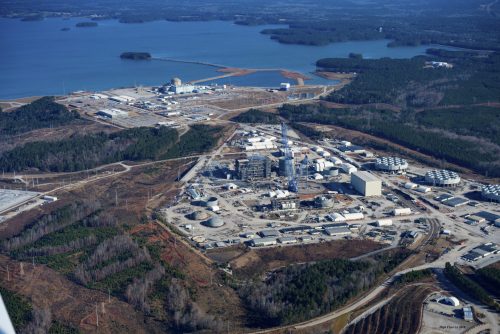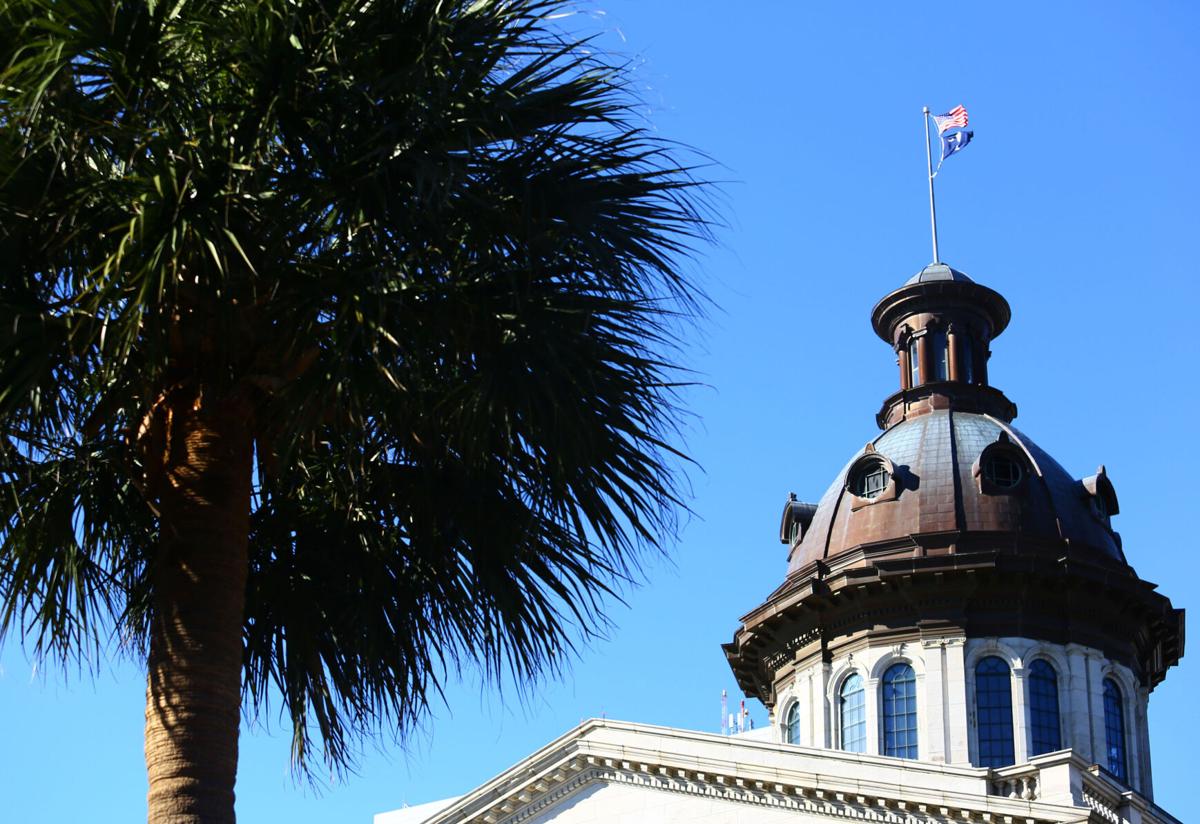New Report: Santee Cooper Financial Analysis from PPI Economist
Download this report
MEMORANDUM
TO: State Leaders
FROM: Kathleen Grace, PhD, Clemson Economics Associates
DATE : September 24, 2020
SUBJECT: Independent Financial Analysis of Santee Cooper
By way of introduction, I am Kathleen Grace, PhD. I earned my B.A. in Economics and Finance from Wofford College in 2006 and my PhD in Quantitative Economics from Clemson University in 2012. I have worked as an investment banking analyst for Raymond James and an Assistant Professor at Furman University and Wofford College.
Since 2017, I have served as an expert witness and consultant in the areas of finance and economics. I have published several peer-reviewed articles as well as consulting papers. When Santee Cooper and SCE&G considered abandoning the V. C. Summer 2 & 3 project, I developed a model to estimate the rates Santee Cooper would be forced to charge were the entity to be able to cover the costs of the failed V. C. Summer nuclear station units 2 & 3. Though my estimates were criticized immediately after their release by the agency, my rate predictions were eventually acknowledged as accurate before a panel of the South Carolina Senate by the then CFO of Santee Cooper, Mr. Jeff Armfield.
I have published a number of assessments of Santee Cooper since, the most recent being “Louder Than Words: The Santee Cooper Balance Sheet Speaks” (January, 2020) that analyzed Santee Cooper to the standard of a typical utility as a method of understanding its true fiscal health.
In the wake of the General Assembly’s consideration of the three options presented by the Department of Administration regarding the future of the utility, the onset of COVID-19, and the Jessica Cook et al. settlement, I have been asked by Palmetto Promise Institute to take a fresh look at Santee Cooper and to analyze its publicly available financial statements and the proceedings of recent board meetings with the goal of providing an arms-length analysis and independent market insight to decision-makers.
This is not a political analysis. I will leave the politics and policy to those who have a desire for such things.
I have grouped my findings into six general categories.
- Through 2029, Santee Cooper will be underfunded by $525 million.
- Through 2026, Santee Cooper is relying on reissuing $4.2 billion in callable debt as a condition of its reform plan.
- The national economy is ripe for a period of inflation which will impact borrowers and refinancers alike.
- Santee Cooper is underinvesting in maintaining its asset base by $150 million per year.
- Future market risk for Santee Cooper.
- Risk mitigation for the future.
Underfunding. According to Santee Cooper’s projections and its current debt schedule, summarized here in Table 1, the agency will be underfunded by $525 milllion through 2029. This means that if we add all the losses from 2020-2029 together, Santee Cooper’s operating income less debt service will be -$525 million.[1] This shortfall cannot be covered by increasing rates because in Santee Cooper’s legal settlement in Jessica Cook et al rates have been frozen through 2024 and the agency promises stable rates for seven years.[2] Hence, there are only two potential ways to fund this deficit:
- Issue more debt or commercial paper[3] (the use of leverage) or
- Forego or neglect capital expenditures[4] (CapEx) and improvements to free up cash and put income tagged for CapEx towards debt service.
The latter is not sustainable and will cost the customer base even more in the future as capital expenditures are needed to maintain the entity as a going concern.
Ultimately, this leaves turning to the debt market. Santee Cooper must refinance and hope for lower rates or longer terms or both. Santee Cooper’s ability to fund its current debt and avoid insolvency depends solely on two key compenents: the market’s appetite for Santee Cooper’s debt, and market interest rates.
Santee Cooper experienced an 11% reduction in revenues attributed to the demand shock associated with COVID-19. If demand continues at the COVID-19 pace, Santee Cooper expects to lose $24 million this year. Santee Cooper is also preparing for low demand and possibly the loss of Century Aluminum next year, predicting losses of between $30 million and $34 million each year in 2021-2023.[5]
Market interest rates. As a part of the General Assembly process to determine the future of Santee Cooper, the state agency presented a Reform Plan to the legislature. The Plan hinges on Santee Cooper’s ability to access debt markets and reissue $4.2 billion in debt (roughly 67% of its outstanding debt) through 2026. This is the portion of Santee Cooper’s debt that is callable. Note: Almost $4 billion of the $4.2 billion in callable debt is callable in 2023-2026.[6] Santee Cooper is exposed to interest rate fluctuations in the short-term on its commercial paper issuances and long-term, to issue debt to fund Capital Expenditures and reissue callable debt.[7]
If Santee Cooper can reissue all $4.2 billion in debt that can be refinanced through 2026 at today’s ultra-low interest rates, it would save $2.4 billion over the life of the debt. Reissuing debt at lower rates is the part of the Reform Plan that enables the Reform Plan to work.
But what if interest rates go up between now and the end of 2026?
What if official rates stay low, but bond yields[8] rise (e.g. bond prices drop and effective interest rates rise)?
If either of these scenarios occur, Santee Cooper will not be able to reissue all or a portion of its debt and accessing debt markets for new capital for CapEx will become more costly. All or part of the $525 million deficit will hit Santee Cooper’s balance sheet before 2027 and customers after 2027. This occurs because Santee Cooper cannot raise electricity rates until 2025, and has effectively promised not to raise them until 2027, so it will be forced to use cash and other assets to service existing debt, or issue new debt at higher rates for which customers will pay even more for after 2027.
One reason bond yields rise is inflation.[9]
Inflation. The Federal Reserve Board of Governors has stated it will allow core inflation to rise above 2-3% (core inflation excludes fuel and food as of 2012 so effective inflation will be higher). How this impacts Santee Cooper depends on what happens in the overall market. At higher and higher levels of inflation, bonds become less attractive to investors which reduces bond prices and pushes yields up. Santee Cooper may benefit by paying back existing debts in the future with dollars whose real value has declined, but Santee Cooper may not be able to issue new debt, or reissue callable debt if investors demand higher yields. This effectively raises the interest rate that Santee Cooper would have to pay on debt in future years if inflation is a concern. And it could raise the rate so much that issuing debt becomes prohibitively costly.
Capital Expenditures. Santee Cooper has enough cash from operations to invest in capital expenditures and maintain its asset base, or service its debt through 2029, but not both. Given the language in Santee Cooper’s bond documents, bond interest and principal payments are senior to all Santee Cooper expenses, including capital improvement expenses, as well as operating and administrative expenses.
Given this language, it appears that if Santee Cooper cannot borrow more money to maintain its asset base, it will be forced to use operating cash flow to service the debt and neglect its planned investments in Property, Plant & Equipment (PP&E) (capital expenditures).
Santee Cooper management highlights in its June 2020 board presentation that it needs to invest $290 million per year through 2029 in CapEx and that if the entity faces low demand, operating losses, or funding issues, they will delay those projects. Over the next 7 years, this could mean that Santee Cooper’s operating assets would not be properly maintained which would lead to a myriad of problems with electrical generation, transmission, customer and employee safety, and litigation.
Underinvestment in capital assets was an issue I discussed in my first report on Santee Cooper (March, 2018) when I estimated the rates needed to fund V. C. Summer 2 & 3. Underinvestment in capital expenditures has been a recurring theme for Santee Cooper and when I analyzed its investments in CapEx from 2017-2020 (largely post-V. C. Summer 2 & 3) compared to Dominion Energy, NextEra, and Duke Energy, we see Santee Cooper continues to invest a far lower proportion than its private counterparts.
Dominion, Duke and NextEra spend on average 43% more on Capital Expenditures per year than Santee Cooper. Using the peers’ CapEx level, we can calculate that Santee Cooper has been underfunding CapEx by around $150 million per year. (This is a lower bound estimate as it includes the amount Santee Cooper spent in 2017 on V. C. Summer 2 & 3.) Santee Cooper has either discovered the secret of how to run a utility company at an efficiency level that no peers have been able to reach over the last decade, or its asset base is eroding. A third-party inspection of the facilities would provide insight into which scenario is occurring.
Market Risk. Given the market conditions and swings we have observed in 2020, I would be negligent if I failed to mention the risk facing the overall U.S. financial system. The way to determine if an asset bubble exists is when investment prices and returns aren’t grounded in reality. Just like everyone knew that real estate had become a bubble from at least 2004 onwards, today, everyone knows that the stock market, and perhaps all U.S. assets, are a bubble.
How do we know this?
At the end of the Second Quarter 2020, Unemployment was over 11% (it had reached as high as 14.7%),[10] the number of small businesses that had permanently closed was at 72,000 and growing,[11] GDP was down by over 32% (annualized),[12] federal debt held by the public was in excess of 79% of GDP (double 2007),[13] yet the Dow Jones Industrial Average is bobbing over its all-time high.[14]
Today, the Federal Reserve is the largest investor in securities in the world. When the market crashed in March 2020, the Fed didn’t just decrease interest rates (effectively encouraging every single open market bank[15] partner to pump money into the stock market), it also invested directly in the securities market. Today the Fed owns 22,900 different securities and has purchased $1 trillion in home mortgage bonds alone since March.[16]
The Great Recession of 2008 is replaying before our eyes, but instead of being based on real estate, which is $4 trillion of the economy,[17] it is based on the entire stock (and bond) market. (The stock market is $35 trillion,[18] the bond market is $41 trillion.[19]) Significant changes to the derivatives, bond and equity markets could very well already be underway. When and what it will entail I cannot predict; however, if it involves inflation or rising interest rates, Santee Cooper will have potentially terminal exposure.
Risk Mitigation. Now to the broader question: to sell Santee Cooper, or to keep Santee Cooper as a state agency? Selling Santee Cooper relieves the state, and the taxpayer, of the risks and responsibilities of the entity. It protects customers and taxpayers from increases in interest rates (or bond yields) which will force higher electricity rates. If the State chooses to keep Santee Cooper, risk mitigation becomes more difficult. I would suggest an independent inspector to determine the quality of Santee Cooper’s utility assets, and locking in today’s low interest rates by purchasing interest rate swaps on any capital Santee Cooper knows it will need, if doing so is not prohibitively costly.
Ultimately, I believe this decision comes down to the General Assembly’s tolerance to market and interest rate risk on behalf of its constituents. Santee Cooper’s ability to maintain itself as a going-concern today is almost solely dependent on factors outside of itself. Even if Santee Cooper had the best management team in the world, a solid understanding of derivatives, and the most efficient asset base, it still may not be enough to keep afloat if interest rates rise.
For the next 4-7 years, without the ability to set rates, Santee Cooper is completely at the mercy of the market.*
REFERENCES
[1] This is a conservative estimate in that I assume Santee Cooper is able to pay the $200 million mandated in the Jessica Cook et al settlement over the next several years from its 4-year average operating margin. To the extent Santee Cooper does not have the budget surplus needed to fund the $200 million, my estimate for total losses of $525 million will be understated. Source.
[2] Presentation, Santee Cooper Board of Directors, June 22, 2020, slide 18.
[3] Commercial Paper. Commercial paper refers to short-term, unsecured debt obligations; issued by financial institutions and large corporations as an alternative to costlier methods of funding. It is a money market instrument that generally comes with a maturity of up to 30-270 days. —Corporate Finance Institute
[4] Capital Expenditures (CapEx). Capital expenditures refer to funds that are used by a company for the purchase, improvement, or maintenance of long-term assets to improve the efficiency or capacity of the company. Long-term assets are usually physical, fixed and non-consumable assets such as property, equipment, or infrastructure, and that have a useful life of more than one accounting period. Also known as “CapEx” or “capital expenses,” capital expenditures include the purchase of items such as new equipment, machinery, land, plant, buildings or warehouses, furniture and fixtures, business vehicles, software, or intangible assets such as a patent or license. —Corporate Finance Institute.
[5] Presentation, Santee Cooper Board of Directors, June 22, 2020, slide 20.
[6] Presentation, Santee Cooper Board of Directors, August 24, 2020, slide 7.
[7] Callable bonds give the issuer the option to repay the bonds at various intervals before maturity. This allows the issuer to take advantage of downward movements in market interest rates instead of being locked into a fixed rate for 15, 30, or 50 years. A callable bond is a bond with an embedded call option.
[8] Bond Yields. In the case of a bond, the yield refers to the annual return on an investment. The yield on a bond is based on both the purchase price of the bond and the interest promised – also known as the coupon payment. Although a bond’s coupon rate is usually fixed, its price fluctuates continuously in response to changes in interest rates in the economy, demand for the instrument, time to maturity, and credit quality of that particular bond. As a result, after bonds are issued, they trade at premiums or discounts to their face values until they mature and return to full face value. —Morningstar.
[9] Inflation is an economic concept that refers to increases in the price level of goods over a set period of time. The rise in the price level signifies that the currency in a given economy loses purchasing power (i.e., less can be bought with the same amount of money). The cause for inflation in the short and medium term remains a controversial issue among economists all over the world. However, there is a consensus that, in the long run, inflation is caused by changes in the money supply. —Corporate Finance Institute.
[10] Civilian Unemployment Rate, United States Bureau of Labor Statistics.
[11] Bender, Andrew. “COVID-19 Claims Nearly 73,000 U.S. Businesses with No End in Sight.” Forbes. July 29, 2020; Yelp Economic Average report 2Q 2020.
[12] Board of Economic Analysis (BEA), “Gross Domestic Product, 2nd Quarter 2020 (Second Estimate); Corporate Profits, 2nd Quarter 2020 (Preliminary Estimate),” August 27, 2020.
[13] Total federal debt is even more. For 2019, total debt was $22.8 trillion. Projected total debt for 2020 will be over $26 trillion. A rise of over $3 trillion in just one year. See Wolla, Scott A. and Kaitlyn Frerking, “Making Sense of the National Debt,” Federal Reserve Bank of St. Louis Economic Research, November, 2019; The Congressional Budget Office (CBO) reported on September 2, 2020: “As a result of…deficits, federal debt held by the public is projected to rise sharply, to 98 percent of GDP in 2020, compared with 79 percent at the end of 2019 and 35 percent in 2007, before the start of the previous recession. It would exceed 100 percent in 2021 and increase to 107 percent in 2023, the highest in the nation’s history.” See An Update to the Budget Outlook: 2020 to 2030 (CBO), September 2, 2020.
[14] Parlin, Andrew. “This U.S. Stock Bubble Could Rank Among the Biggest in History,” Financial Times, September 6, 2020; Rosenberg, David. “Five Signs that Show This Stock Market is in a Bubble,” Financial Post, September 8, 2020, Insana, Ron, “Why the Fed’s New Inflation Policy Could Backfire,” CNBC, September 3, 2020.
[15] The Fed raises and lowers the interest rate through “open market operations” in which member banks either buy or sell treasury bonds to the Fed until the desired interest rate is achieved. The member banks then take the funds from the Fed (in the case of rate decreases) and lend in the economy; or when not enough qualified borrowers exist, the banks invest it in the stock/bond markets.
[16] Bloomberg Terminal listing of securities held by The Fed; Maloney, Christopher. “Fed’s Mortgage-Buying Spree at $1 Trillion With No End in Sight,” Forbes, September 1, 2020.
[17] Bureau of Economic Analysis, United States Department of Commerce, Table 8. Gross Output by Industry Group, Real Estate and Rental and Leasing, July 6, 2020.
[18] Dow Jones U.S. Total Stock Market Index, accessed September 8, 2020.
[19] SIFMA Global Markets Fact Book 2019, Table: Global Bond Market Outstanding–Value ($ Billions). Securities Industry and Financial Markets Association (SIFMA).







